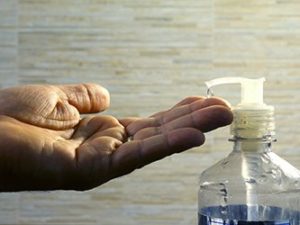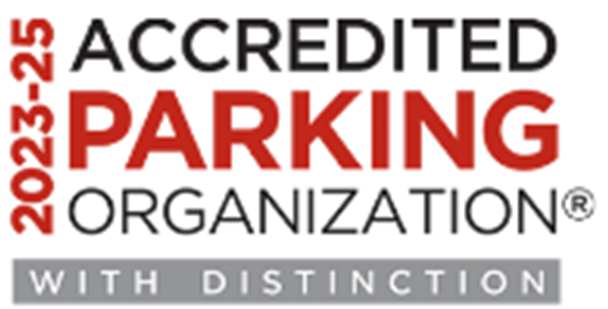Healthcare-associated infections (HAIs) are a prevalent, yet often preventable, threat to patient safety. In fact, as you’re reading this, a staggering one in 25 hospital patients has fallen victim to one or more HAIs, in a battle that costs an estimated $10 billion a year in the U.S. alone.
For healthcare providers to effectively combat HAIs on a day-to-day basis, it’s essential to implement infection control measures at the first patient/visitor touchpoint on-site. For most providers, that touchpoint is the parking lot.
Here are three ways to protect people’s health — and your facility’s hygiene — via your parking lot:
1. Hand Hygiene

Hand hygiene is the single most effective means of controlling the spread of HAIs yet remains one of the biggest challenges in healthcare settings. Thus, it’s imperative that your parking facility have ample hand sanitizing options for patients, visitors, and staff, and that attendants be well versed in hand disinfection best practices:
- For unsoiled hands, attendants should use an alcohol-based hand sanitizer with a minimum alcohol content of 70 percent. This type of hand disinfection should occur after any contact with a visitor, patient, or high-traffic touchpoint — like a car door handle, for example.
- For soiled hands, attendants should use soap and water to wash using the five-step method recommended by the U.S. Centers for Disease Control and Prevention (CDC). Soap must be dispensed from a pump or hands-free dispenser to avoid the spread of hand-carried pathogens.
2. Staff Health

Your parking facility staff should be able to identify and monitor changes in their own health and know when to remove themselves from the work environment. For example, if an attendant experiences a worsening cough and fever of over 100.4 degrees Fahrenheit (38 degrees Celsius), they should recognize the risk of a febrile respiratory illness (FRI) and remain at home. This self-awareness is particularly important for any staff who regularly interact with immunocompromised and/or elderly persons, due to the complications that may arise from preventable infections. Knowing the importance of maintaining a healthy team, an effective parking services provider should have sufficient redundancy built into its workforce to accommodate any instances of staff sickness.
3. Visitor Awareness

Visitors should be advised of the appropriate hand hygiene procedures upon entering and exiting a healthcare facility. Communicating this advice can be as simple as strategically placing clear, eye-catching signage in and around the parking lot.
A social cue that complements signage reinforces the importance of the message and encourages compliance.
Parking and valet attendants can incorporate infection control information into their customer service script by, for example, relaying directions to the nearest hand sanitization and surgical mask stations. Your service provider can and should be providing recommendations on where to place these service stations within your operation for maximum impact.
Our Training Program

Implementing effective infection control measures in your parking facility is a low output, high return element of providing a healthcare service based on wellness, not sickness. Aside from the practicality of parking-facility infection control, its role in the entry/exit experience serves to strengthen visitor and patient confidence in the quality and safety of your clinical care.
Impark HEALTH manages parking facilities, including the implementation and oversight of infection control procedures, so that healthcare institutions can focus on providing quality clinical care. All Impark HEALTH staff complete rigorous infection control training that complies with and exceeds the expectations of the Occupational Safety and Health Administration (OSHA) in the U.S. and Canadian Centre for Occupational Health and Safety (CCOHS) in Canada.
Impark HEALTH offers a variety of customized parking, transportation, and operational solutions to healthcare facilities across North America. Get in touch to see how we can help you.


